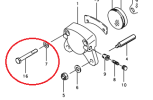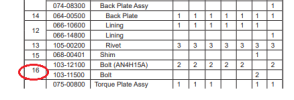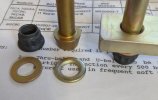Chip Sylverne
Final Approach
- Joined
- Jun 17, 2006
- Messages
- 6,008
- Display Name
Display name:
Quit with the negative waves, man.
Can find all manner of guidance about the re-use of self- locking nuts, but can find little about re-using self-locking screws, specifically std-1856 1/4-20 of the type that secure the oil filter housing to a Lycoming accessory case. Since those little suckers aren't cheap, it would be nice to use them again if acceptable to do so.
Lycoming's service letter specifically requires new gaskets and seals, but hardware isn't mentioned.
Any guidance available that I missed?
Lycoming's service letter specifically requires new gaskets and seals, but hardware isn't mentioned.
Any guidance available that I missed?
Last edited:












